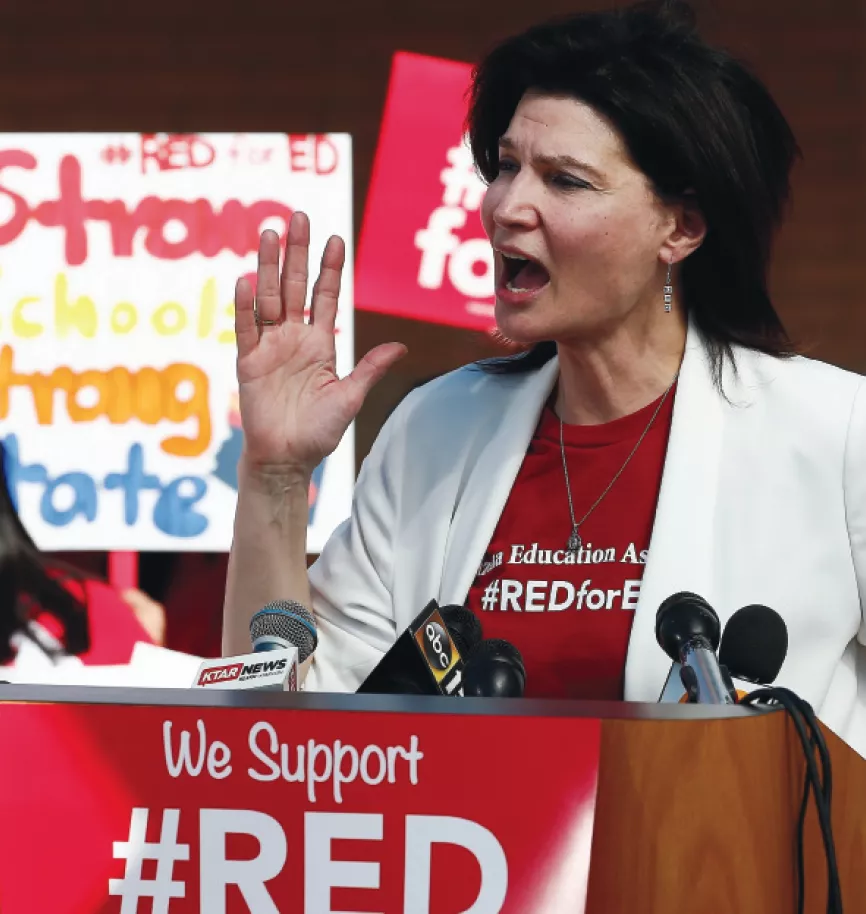The uprisings of educators across the nation last year made it clear that 2018 would be the Year of the Educator. We’re not finished, however. The best is yet to come.
Last spring, we all saw educators from West Virginia to Arizona take to the streets to demand the resources their students and schools need, and the pay and respect that educators deserve. Their actions launched the #RedForEd movement and made education a top issue in the midterm elections.
Many educators—a record-setting number, in fact—decided to run for office themselves. After decades of watching politicians starve public schools, teachers, college professors, and education support professionals said, “I can do better.” Nearly 1,800 current or former educators ran for state legislative seats, and more than 100 ran for governor or Congress. Still more ran for other local and state offices.
Once the results were in, it was clear that #RedForEd had an impact. Pro- education candidates were elected at every level of government. Lawmakers learned an important lesson: You can either work with educators to create the learning environments that will nurture students’ love of learning and imagination, or we will elect those who will.
At least 290 state legislative seats and seven state chambers were flipped to pro-education majorities, several in states that have endured round after round of education cuts. Tony Evers, former state superintendent of schools in Wisconsin, was elected governor, ending the reign of Scott Walker, notorious for his union-busting, budget-cutting tactics. A former high school teacher, Tim Walz, is Minnesota’s new governor, and 2016 Teacher of the Year Jahana Hayes was elected to Congress from Connecticut.
The newly elected leaders benefited from an unprecedented level of educator activism. Nearly 220,000 NEA members and their families
helped to get out the vote. They made calls, knocked on doors, and talked to their neighbors about the importance of this election. That represented a 165 percent increase in activism compared with 2016. That is even more remarkable given that activism typically falls off in a midterm election year.
The victors include more than 100 women elected to the House of Representatives—the highest number in history.
All of these voices in state capitols and Congress will bring fresh perspectives to every challenge we face, from the opioid crisis and its impact on schools to climate change.
However, it is not enough to cast a vote in one election; that is only a start. We must continue our engagement and activism. That is the only way we will deliver to our students the schools that they and their communities deserve.



